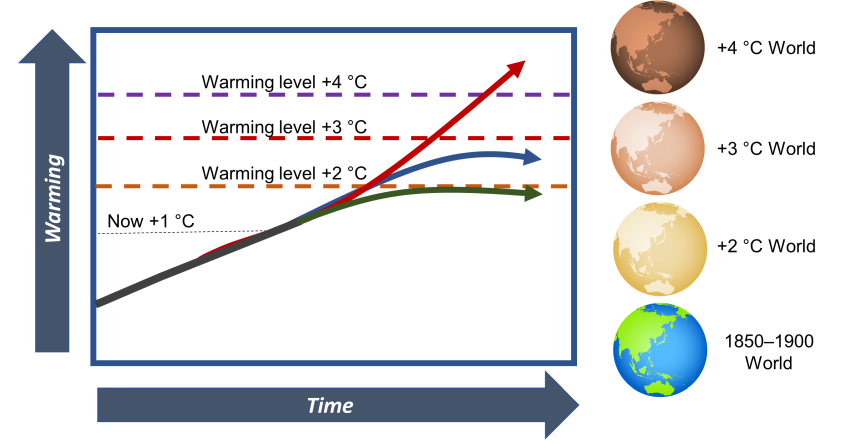Climate Change in Australia
Climate information, projections, tools and data
Quick Start Guide
Global warming levels are one of three 'lenses' of thinking about the future climate, also called ‘dimensions of integration’:
- Emissions pathways
- Global warming levels
- Cumulative carbon emissions
See Lenses for more.
Global warming level projections are the change in the climate of Australia when the global mean surface temperature (GMST) is consistently at a temperature ‘level’ warmer than a pre-industrial climate: +1.5, +2, +3 and +4 °C.
- Global average temperature (including over oceans) – not local temperature at any one place
- From the 1850–1900 baseline (reference period) – not from today
Projections of change in average annual temperature in Australia at different global warming levels are presented in Temperature Change
Projections of change in average annual and average seasonal rainfall in Australia at different global warming levels are presented in Rainfall Change
In 2020, the world (land and ocean) has warmed by around +1.1 °C and land by around +1.6 °C since pre-industrial times, see Current Warming Level for more.
The timing of reaching global warming levels depends on three factors: 1). the global greenhouse gas and aerosol emissions, 2). the strength of the response to greenhouse gases (known as climate sensitivity) and 3). climate variability. The world may temporarily reach +1.5 °C in the next few years and may be steadily at or close to the +1.5 °C global warming level sometime between the late 2020s and the 2050s, depending on these three factors. There is an estimated window for reaching other global warming levels for each emissions pathway the world may follow. See Reaching Global Warming Levels for more.
Australia has warmed by more than the global average (land and ocean), and similar to the global land average: 1.44 ± 0.24 °C since 1910 and likely around 1.6 °C since 1850–1900, with the coastal regions warming less than inland. See Australian warming for more.
The annual temperature of Australia and most regions within Australia is now consistently warmer than the range it would have been in a pre-industrial climate, this is known as climate change ‘emergence’, see Emergence for more.
The annual temperature of Australia’s hottest year on record, 2019, was roughly what we expect to be the average temperature in a +1.5 °C world, some but not all states have seen years consistent with the average in a +1.5 °C world too, see Years at +1.5 °C level for more.
There are various methods to make global warming level projections, we use the ‘time sampling’ method, see Methods for more.




